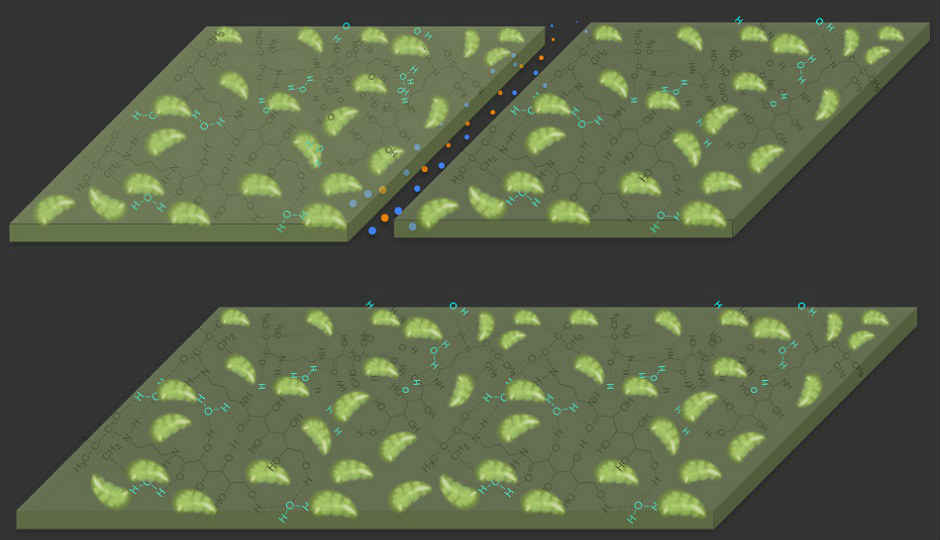New self-healing material ‘grows’ by reacting with carbon dioxide

MIT engineers have developed a new polymer that incorporates carbon dioxide in the air around it in its incredible self-healing process.
Wouldn’t it be great if that unfortunate crack on your smartphone’s display could just heal itself automatically the next day over a breezy morning walk? It seems such a technology is closer to reality than we imagined. Engineers at MIT have developed a new polymer that “grows” by reacting with carbon dioxide in the atmosphere. It continuously converts the greenhouse gas into a carbon-based material that repairs and reinforces itself, reports MIT News.
The present version of the newly developed material is a synthetic gel-like substance. It undergoes a chemical process akin to that of plants by incorporating carbon dioxide from the air into its growth. In the future the new material could, for instance, be made into sheets and panels of a lightweight matrix for use in building constructions. The material would harden and solidify just by exposure to air and sunlight and thereby help construction firms economise a lot in transportation costs.
The complete study is detailed in a paper in the Advanced Materials journal by Prof Michael Strano, Seon-Yeong Kwak, and eight others from MIT and the University of California, Riverside. “This is a completely new concept in materials science,” explains Strano, who deals with Chemical Engineering. Talking about self-healing materials such as the one recently developed, he says, “What we call carbon-fixing materials don’t exist yet today.”
“Imagine a synthetic material that could grow like trees, taking the carbon from the carbon dioxide and incorporating it into the material’s backbone,” Strano adds. That said, it seems the team’s initial experiments were not completely free of biological components. The team relied on chloroplasts from spinach leaves, which are specialised compartments in the cells of plants that carry out photosynthesis. The US Department of Energy is currently sponsoring a new programme to further develop this new finding.
Cover image courtesy: MIT News
The cover image shows a dark green hydrogel embedded with chloroplasts derived from plants. The material beneath reacts with carbon dioxide in the presence of light to expand and fill the gaps.
Vignesh Giridharan
Progressively identifies more with the term ‘legacy device’ as time marches on. View Full Profile




